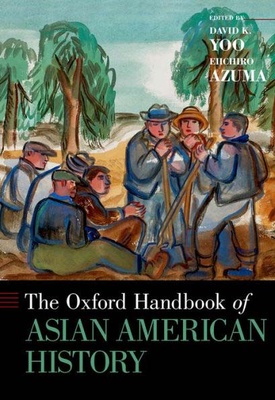This impressive volume, published at the semi-centennial of Asian American studies, serves admirably as an authoritative marker of Asian American history’s coming of age. Edited by two stalwarts in the field, David K. Yoo and Eiichiro Azuma, it consists of a masterful overview introduction by them, plus 27 in-depth historiographical essays penned by leading scholars that are representative of this vibrant multifarious branch of U.S. history. All but one of these scholars are Asian Americans of various ethnicities, with the exception being notable Nichi Bei Weekly columnist Greg Robinson.
In addition to Robinson’s insightful essay on “Asian American Legal History,” the handbook includes probing cutting-edge essays by seven highly reputed Japanese American research specialists: Azuma, “Internment and World War II History”; Daryl Joji Maeda, “The Asian American Movement”; Lon Kurashige, “Theory and History”; Amy Sueyoshi, “Queer Asian American Historiography”; Scott Kurashige, “Race, Space, and Place in Asian American Urban History”; Franklin Odo, “Public History and Asian Americans”; and Eileen H. Tamura, “Asian American Education History.”
Structured into four parts — “Migration Flows,” “Time Passages,” “Variations on Themes,” and “Engaging Historical Fields” — each of the book’s essays succeed in different yet overlapping and interpenetrating ways to “complicate” (that is, render more complex, precise, and enriched) the mosaic of Asian American history. Typically, this process of complication is attributed by the respective authors of the essays to a combination of salient factors, such as new source material, theories, research methods, approaches, technologies, circumstances, practitioners and target audiences.
Virtually all of the writers in the volume emphasize that the field of Asian American history as a whole, as well as within its assorted subfields, has moved from being less provincial and more cosmopolitan as a consequence of being transformed from its earlier focus on the experience of Americans of Japanese, Chinese and Filipino descent, to its expanded concern with those Asian Americans endowed with a multiplicity of other lineages and backgrounds. In addition, many of the scholars place a premium upon how Asian American history has been illuminated and enhanced through being viewed from a transnational, hemispheric, global or comparative perspective.
With respect to the writing style employed by the essayists in the handbook, it varies from being very accessible for the general reader to being somewhat less so for those outside academe who are unversed in its conceptual conventions and discourse. It probably would have leavened the loaf for non-academic readers had provision been made for photographs and other illustrations, such as the arresting Miné Okubo 1942 cover painting, Planting Trees, to be infused within the volume to temper its dense tide of text, notes, bibliographies, and index (though I suspect that this format was not permitted for an Oxford University Press handbook).
While The Oxford Handbook of Asian American History will assuredly find a home in most relevant institutional libraries, its steep price should not restrain its purchase and selective use by serious scholars of Asian American history both inside and outside of the academy, for it is an altogether invaluable resource. Indeed, its editors and contributors should be saluted for bringing this exemplary work to fruition.
The Oxford Handbook of Asian American History
Edited by David K. Yoo and Eiichiro Azuma
(New York: Oxford University Press, 2016, 544 pp., $150, hardcover)
*This article was originally published in the Nichi Bei Weekly on January 1, 2018.
© 2018 Arthur A. Hansen and Nichi Bei Weekly








